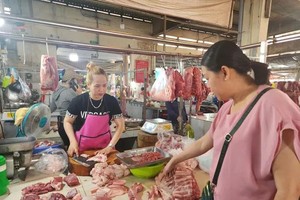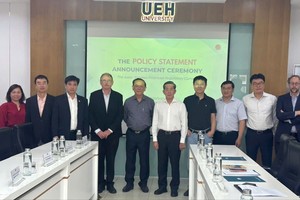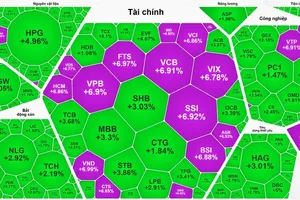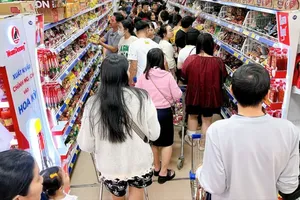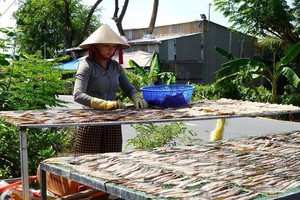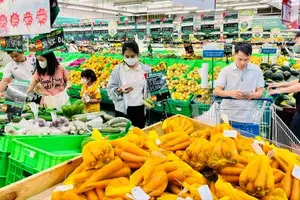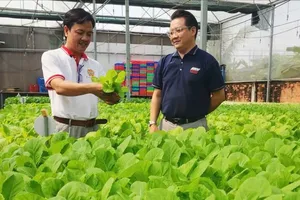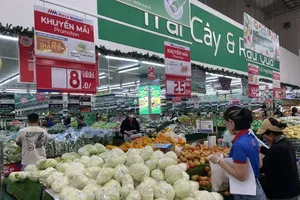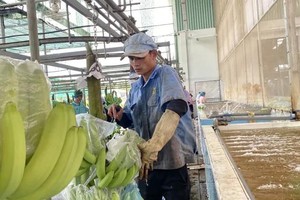
Durian farm owner Nguyen Thai Hung in Cai Lay District of Tien Giang Province sadly shared that only 10 days ago, the price of Monthong durian was as high VND200,000 (US$8) per kilo, and even unripe fruits were welcomed; but now the price halves. Other durian varieties like Ri6 also see a fall to VND60,000-70,000 ($2.4-2.8) a kilo. Similar situations can be seen in neighbouring localities like Cai Be District (Tien Giang Province), Phong Dien District (Can Tho City), Giong Rieng District (Kien Giang Province).
“The costs for nurturing durian are extremely high, at about VND600 million ($23,900) from the beginning to the first harvest. We have loaned VND1 billion ($39,870) to invest in our 3-hectare durian orchard. Now that the fruit prices are dropping when the crop is not fully harvested yet, the future seems too worrisome”, shared durian farm owner Dang Hong Minh from Phong Dien District.
There are various reasons why this is happening, the main one being loose monitoring over the quality of exported durian. In other words, seeing that durian prices were lucratively high, many Vietnamese wholesalers signed contracts with their Chinese partners to buy in large quantities. They then forced durian farmers to pick fruits even when they are not sufficiently mature, leading to unsatisfactory quality and driving customers away.
Severe salinity intrusion recently has also negatively influenced both the quality and yield of durians in the Mekong Delta. Taking advantage of this, domestic wholesalers purposedly collect the fruit with unreasonably low prices.
At present, Phong Dien District owns a durian orchard surface area of 3,530ha, producing an output of more than 32,600 tonnes per year. In the previous three months, when durian prices were still high, due to supply shortage, wholesalers accepted even immature fruits and dipped them in chemicals so that these fruits can ripen unnaturally before selling them domestically.
Others play a dirty trick of harvesting immature fruits just enough for the value of their deposit (normally 5 percent of the area) before stopping and forcing farmers to decrease the offered prices by 20-30 percent; otherwise, they will not continue to buy.
Aware of these tricks, the People’s Committee of Phong Dien District has just issued a formal dispatch asking the local authorities of its communes strictly monitor durian trading and timely impose severe punishments to law breakers. Durian farmers are advised not to harvest fruits too immaturely so that the quality is maintained in international markets.
General Secretary Dang Phuc Nguyen of the Vietnam Fruit and Vegetable Association affirmed the above situations do happen in the Mekong Delta right now, not to mention a fierce competition from Thai durian, resulting in less popularity of Vietnamese durian among Chinese consumers.
It is high time Vietnam seriously review the quality of its exported durian, especially when the prices have dropped significantly like this. In Thailand, selling immature durian earns a severe fine whereas in Vietnam this is rather common without any sanction or control. Vietnam should urgently introduce regulations as well as product quality standards for each type of durian, in addition to establishing specific state units to handle problems in this aspect.
The Plant Protection Department (under the Ministry of Agriculture and Rural Development) informed that until now, 876 durian growing area codes and durian packing facility codes in Vietnam are certified to export durian to China.
Among the 23 localities owning such codes, Tien Giang Province is the leader, followed by the provinces of Lam Dong, Dak Lak, and Binh Phuoc. These valuable codes should be strictly monitored and managed to ensure the quality of exported durians and minimize the cases of borrowing growing area codes for export purposes.
In the past 10 years, the surface area of durian orchards in the Mekong Delta has increased by 20,600ha to 33,200ha, with an annual yield of 330,000 tonnes. As durian prices in the first three months this year were attractively high, many farmers have decided to switch from rice or jackfruit to durian growing, with some not even following the local land use planning.
The Ministry of Agriculture and Rural Development reports that during the first three months this year, fruit and vegetable export turnover reached $1.23 billion, a rise of 25.8 percent compared to this time last year. This is the first time that such exports have exceeded $1 billion right in the first quarter.
It is forecast that the annual growth rate of fruit and vegetable export in 2024 will increase by 15-20 percent as opposed to last year, reaching a record high of $6-6.5 billion. Notably, durians become the most profitable exported fruit, with a predicted turnover of $254 million in the first quarter (a rise of 66 percent compared to last year). The proportion of durian exports to China accounts for 98 percent of the total durian export turnover.




